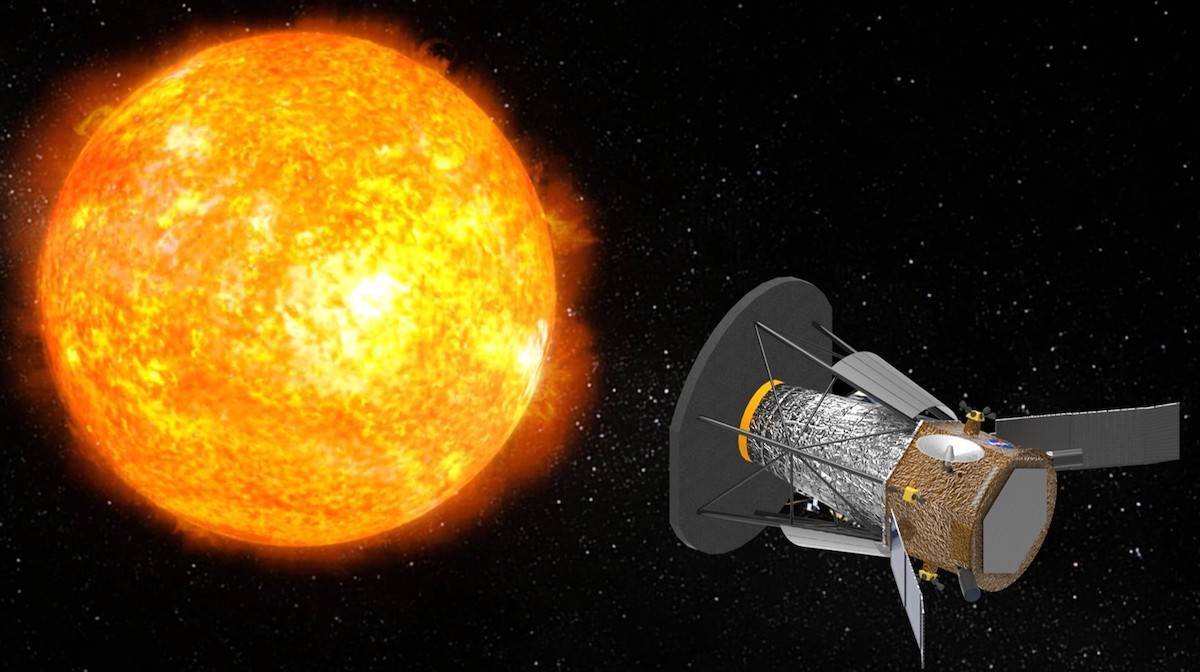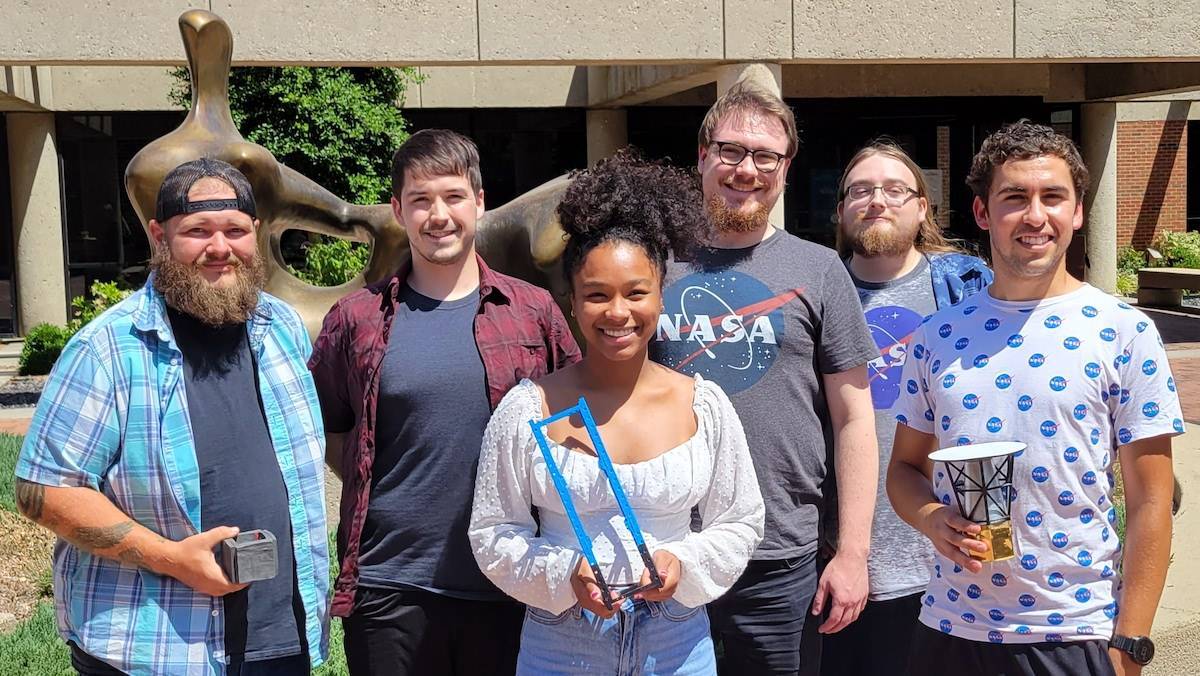Neutrinos are on the short list of the biggest mysteries in fundamental physics, and Wichita State University researchers are taking a lead role in investigating them.
“The unsolved question right now is ‘Why do they have mass? How do they have mass?’” said Jonathan Folkerts, Wichita State graduate student. “When neutrinos were first thought of, we figured they had to be massless, but they do some things that mean they have to have mass.”
In late September, Folkerts, Jarred Novak and Trent English presented papers on the design of their neutrino detector prototype at the International Astronautical Congress in Paris, representing the NASA-funded Solar Neutrino Orbiting Laboratory Detector Development Project.
The grant project, “Cube-sat Space Flight Test of a Neutrino Detector,” will allow Dr. Nick Solomey’s team to design a solar probe to look for neutrinos. Solomey, a physics professor at Wichita State, and his research collaborators earned a $2 million grant from NASA in 2021 to improve a future solar mission's technological readiness level (TRL).
“We are trying to fly a detector outside of where the earth is shielding us,” Folkerts said. “The earth’s magnetic field does a great job of protecting us from these particles. When you get in a small region outside the north and south magnetic poles, you are not shielded. We are going to be flying above those poles in those regions looking for background signals that we can study, so that when we design a future mission that can go close to the sun, we’ll have a very good idea what sort of background noise there is going to be.”
Folkerts is pursuing his doctoral degree in applied mathematics. Novak is pursuing a master’s degree in physics. English is a Wichita State graduate with a master’s degree in physics.
 Courtesy graphic
Courtesy graphicNeutrinos are miniscule subatomic particles that are similar to electrons, but have no charge and almost negligible mass. Understanding neutrinos holds the keys to understanding the structure of the universe and the origin of mass. According to neutrinos.fnal.gov, neutrinos are the second most abundant fundamental particle in the universe, and the sun is the source of most of these local neutrinos.
Folkerts’ talk focused on testing the science payload and the science detector.
Novak presented on the cosmic ray radiation shield he developed to protect the detector. The shield is made of tungsten and epoxy plastic and designed to burn up upon reentry. He majored in mechanical engineering and physics as an undergraduate at Wichita State and said that background is crucial to his work on the neutrino project.
“When I first got approached, I understood radiation,” he said. “I thought about the physics. I thought about the engineering. I took polymers and my metals classes and everything like that. It made it a little easier for me to understand. Because of the physics behind it, I knew what the radiation was and I knew how to do it. That’s the key concept.”
Novak can control the density of the shield by adding or removing materials to meet weight or shielding requirements.
“It’s the first of its kind,” he said. “No other cube-sat mission will have shielding, and if there is shielding, this is the first one that is destructible.”
The detector is powered by solar panels and will ride on a rocket, along with other projects. Work started in 2019 and the two-year mission is scheduled to launch in 2024.


 Courtesy photo
Courtesy photo